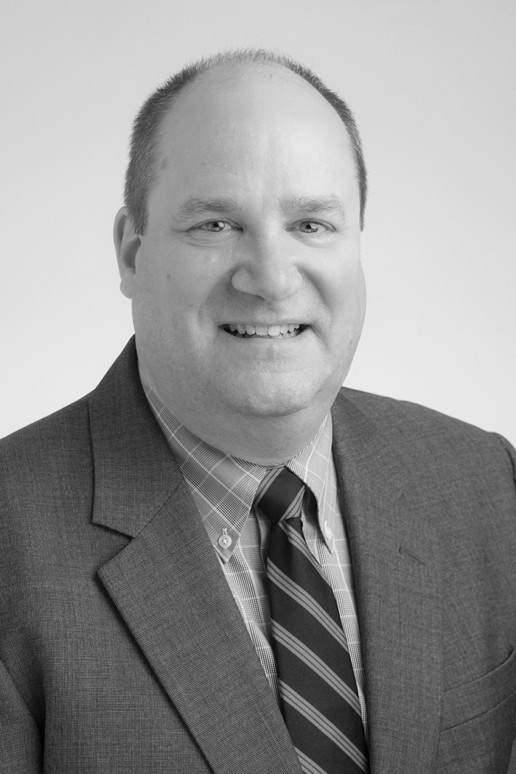Retiring Abroad
Retirement looks different for everyone but what does retiring abroad look like? How well does Medicare travel? Keep reading to learn about some of the realities of retiring abroad.
When Karen Schirack, 67, slipped on her way into her house in January and broke her left femur in multiple places, she had a decision to make. Should she get surgery to repair the fractured thigh bone and replace her hip near Ajijic, Mexico, where she has lived for 20 years, or be airlifted back to her home state of Ohio for surgery and rehab?
As the number of American retirees living overseas grows, more of them are confronting choices like Schirack’s about medical care. If they were living in the United States, Medicare would generally be their coverage option. But Medicare doesn’t pay for care outside the U.S., except in limited circumstances.
Expatriate retirees might find private insurance policies and national health plans in other countries. But these may not provide high-quality, comprehensive care at an affordable price that retirees expect through Medicare. Faced with imperfect choices, some retirees cobble together different types of insurance, a mix that includes Medicare.
That’s what Schirack has done. She pays about $3,700 annually for a private insurance policy through Allianz that covered her surgery at a private hospital in Guadalajara, about an hour from Ajijic. She also has a medical evacuation policy that would have paid for her flight to the States, if she’d opted for that. That policy costs roughly $3,000 for five years. And she pays for Medicare Part B, which she can use for care when she visits family in the U.S. (The standard Part B premium is $135.50 monthly.)
Schirack has a scar running from her waist to the middle of her thigh, but she no longer needs home nursing care and wrapped up months of physical therapy in June. After five more months of healing, she hopes to be back to normal.
Her private plan paid the equivalent of about $20,000 for her surgery. Before she left the hospital, Schirack had to cover her portion of the total, about $2,400, plus bills for other expenses, including blood transfusions.
After she left the hospital, she was responsible for paying for other services — home nurses, physical therapy and medications — and submitting receipts to the insurer for reimbursement. She estimates she has spent about $10,000 and has been reimbursed for about two-thirds of that so far.
If she’d had surgery in the States, she might have faced fewer paperwork hassles, Schirack said, “but all in all, I’m not going to complain.”
The quality of health care varies widely by country, as do the services available to foreign residents. And there are quite a few of these transplanted Americans.
From 2012 to 2017, the number of retired workers living in foreign countries who were receiving Social Security benefits grew by nearly 15% to more than 413,000, according to the Social Security Administration. The largest numbers were in Canada (nearly 70,000) and Japan (more than 45,000). Mexico was third, home to nearly 30,000 retired workers.
Commercial health care policies for them may provide decent coverage, but people can generally be denied a policy or charged higher rates for medical reasons. The plans may refuse to cover some preexisting conditions. Schirack’s policy, for example, doesn’t cover any services related to her allergies.
Private policies can be problematic for another reason: They may have age limits. The GeoBlue Xplorer Essential plan, for example, enrolls only people who are 74 or younger, and coverage expires when people turn 84. In contrast, Medicare eligibility generally begins at 65 and continues until a beneficiary dies.
And the policies aren’t cheap. A 70-year-old might pay $1,900 a month for an Xplorer Essential plan with a $1,000 deductible, said Todd Taylor, a sales director for GeoBlue. A plan with a $5,000 deductible might run $1,400 monthly. That doesn’t include coverage for services in the United States.
Rates may also vary by country. A 67-year-old American living in Costa Rica who buys a midlevel Cigna plan with a deductible of $750 for hospital care and $150 for outpatient care might pay $1,164 a month, said David Tompkins, president of TFG Global Insurance Solutions. The same policy might cost $913 in France, Tompkins said.

Claudia Peresman moved from Connecticut to San Miguel de Allende, Mexico, last November. She has opted for a private insurance plan, for which she pays about $100 a month. “What I wanted was catastrophic coverage,” she says. “Things are so affordable here that, outside of being admitted to the hospital, I can probably afford it.”(COURTESY OF CLAUDIA PERESMAN)
Since medical care is sometimes much less expensive overseas, some retirees opt to pay out of pocket for minor or routine services.
Claudia Peresman, 63, moved from Stonington, Conn., to San Miguel de Allende in central Mexico last November. On her first night there, she tripped in the bathroom, hit her face on a wall and split her lip. Her neighbors helped her get a cab to a 24-hour emergency room at a hospital about five minutes away, where staff cleaned up the cut and sent her home. She paid the roughly $25 fee in cash.
Peresman recently purchased a private insurance plan with a $2,500 deductible, for which she pays about $100 a month.
“What I wanted was catastrophic coverage,” she said. “Things are so affordable here that, outside of being admitted to the hospital, I can probably afford it.”
Even when retirees buy a private policy, Medicare is another piece of the puzzle that they have to consider. Once people become eligible for Medicare coverage, usually at age 65, they face a 10% premium penalty for every 12 months they are not enrolled in Part B, which covers outpatient services. (People who are 65 but still covered by an employer plan generally do not face that penalty.)
After paying into the Medicare system for decades, it’s no wonder some expats are frustrated that they can’t generally use the program outside the United States.
That’s just the way the law is written, an official at the federal Centers for Medicare & Medicaid Services said.
“CMS cannot speak to or speculate on congressional intent,” the official said.
And retirees should honestly consider whether they will spend the rest of their lives overseas.
“Even if that is their goal, is their health and mobility going to allow them to accomplish that?” said Dr. David Shlim, 69, who treated many expats when he ran a medical clinic in Kathmandu, Nepal, in the 1980s and ’90s. “People should imagine that they may need to come back to the U.S. and ask themselves how are they going to do that and afford that.”
Rules on whether noncitizens can enroll in a national health plan vary by country.
After living in the United States for nearly 30 years and raising a family here, Alberto Avendaño, 61, is moving back to northern Spain in August with his wife, Zuni Garro, also 61. Avendaño has dual citizenship, and his wife is a citizen of the United States. The couple can enroll in the Spanish universal health system and receive care there. They also plan to buy a private plan to use if they want to get medical services without a wait, said Avendaño.
Once they turn 65, they may enroll in Medicare as well, Avendaño said, depending on their circumstances. Their two children live in the United States.
“It is something that is part of our American system, and we want to have it,” he said.
Peresman also has a few years before turning 65 and making a decision, but she is leaning in the other direction. She is worried that the Medicare program may not exist in its current form when it comes time to decide.
“I’d sign up if it were absolutely free,” she said. “But I’m already paying $100 a month here.”
SOURCE- Andrews, Michelle. (23 July 2019). “Dream of Retiring Abroad? The Reality: Medicare Doesn’t Travel Well” (Web Blog Post). Retrieved from https://khn.org/news/retiring-abroad-prepare-to-possibly-mix-and-match-health-insurance/
3 Tips for Maxing Out Your 401(k)
Using a 401(k) is a great way to save for retirement, but many people with access to a 401(k) struggle to max out their yearly contribution limits. Read this post for tips on how to max out your 401(k).
Saving in a 401(k) is a great way to build a solid nest egg for retirement -- which you'll definitely need since Social Security won't provide enough income for you to live on by itself. But many people with access to a 401(k) struggle to max out because the annual contribution limits are so high.
For 2019, workers under 50 can sock away up to $19,000 in a 401(k). Those 50 and older, meanwhile, can set aside up to $25,000. That's far more than this year's IRA contribution limits of $6,000 and $7,000, respectively.
See Also: At Saxon, we understand that you need to feel confident in your future.
Still, maxing out a 401(k) could be your ticket to an extremely comfortable retirement. If you were to max out your 401(k) at today's limits between ages 35 and 65, you'd wind up with $1.95 million if your investments were to generate an average annual return of 7% during those 30 years, which is more than doable with a stock-heavy portfolio. As such, it pays to push yourself to max out, and you'll be more likely to hit that goal if you do the following things.
1. Bank your bonus cash
Many of us come into extra money during the year, whether it's a performance bonus at work, a tax refund, or even a cash gift. If you pledge to put any funds that fall into that category into your 401(k), you'll boost your contribution rate without having to worry about slashing expenses.
2. Cut back on spending
Unless you get a really generous bonus, gift, or tax refund, you'll need to work on spending less if you're looking to max out a 401(k). But if you're willing to make some sacrifices, you can increase your contributions to the point where you save enough for your dream retirement. Comb through your budget and aim to cut back on smaller expenses, like your cable or cellphone bill. But if you're serious about maxing out a 401(k), you may need to think big -- like downsizing to a smaller home that slashes your mortgage and property tax payments by $1,000 a month.
3. Get a second job
You can only cut back on so many expenses before seriously impacting your quality of life. If you're not willing or able to go on an all-out expense-slashing spree, but you're eager to max out your 401(k), try getting yourself a second job. If you do, you'll be in good company. Of the millions of Americans who currently hold down a side hustle, an estimated 14% do so for the express purpose of funding a retirement plan.
Imagine you're able to work a lucrative side gig that puts an extra $1,000 in your pocket every month. Assuming you're under 50, if you were to put that money right into your 401(k), you'd only have to come up with another $7,000 over the course of a year to max out. That's a far easier notion than cutting expenses to the tune of $19,000.
Even if you don't manage to max out your 401(k) every year, doing it even a few years over the course of your career could really help. Remember, too, that when you fund a traditional 401(k), the money you contribute is income the IRS can't tax you on. This means that if your tax rate is 24%, and you manage to stick $19,000 in a traditional 401(k), you'll save yourself $4,560 right off the bat. And that's reason enough to work your hardest to contribute the maximum amount you can to your 401(k).
The Motley Fool has a disclosure policy.
SOURCE: Backman, M. (20 June 2019) "3 Tips for Maxing Out Your 401(k)" (Web Blog Post). Retrieved from https://www.fool.com/retirement/2019/06/20/3-tips-for-maxing-out-your-401k.aspx
Considering Retirement But Getting Cold Feet?
Are you nearing retirement age but getting cold feet about retiring? Many consider their financial state when deciding when they should retire but there are some other factors you should take into account. Read this blog post from SHRM for factors to consider when deciding the timing of retirement.
I’ve been with the same company for the last 15 years and I’m nearing early retirement age. I always assumed I would welcome this but - like a dog finally catching that car it’s been chasing for years- now that the time has come, I'm getting cold feet. I feel like I’m financially ready, but my gut is telling me “Don’t do it yet”. My employer is supportive either way, although I sense some colleagues would welcome the promotion opportunities that would open up when I leave. What factors should I consider when deciding the timing of retirement?
Many people base their decision to retire solely on the state of their finances. If this isn’t a factor in your decision, congratulations, you’re among the lucky few. So, let’s consider the other factors.
First, I would promptly set aside whether your coworkers want you to hurry-up-and-retire-already for their own career opportunities. That’s understandable but I would not let that weigh heavily –if at all- in your decision.
Second, I would concentrate on what your gut is telling you. I believe in following one’s gut, but not blindly. For me, gut feelings are flags for things that should be examined. It’s your mind and body letting you know, “hey, you should pay attention to this”, dig on this spot, explore where these feelings are coming from and where they point to.
For example, you could be over identified with your professional-self and your personal-self may feel vulnerable without having a professional role. This is especially true if you have a fancy title or you think you’re somebody. It can be unsettling to become just one more retiree ordering the early bird special.
So, what’s the antidote?
Well, you should have the first year of your retirement life planned out as carefully as you’d plan a mid-career hiatus. Consider: Where you’re going to go everyday; who you’re going to hang with; what hobbies you’re going to pick up; which boards you’ll volunteer for; what causes you’ll join; what you’re going to wear and what schedule you’re going to keep.
I think once you have a clear picture of “who” and “what” you are going to be when you retire, perhaps your gut will feel more comfortable and instead of telling you “Don’t do it yet” it may tell you “What are you waiting for?”
Originally posted on HR Box.
SOURCE: Del Rio, E. (13 May 2019) "Considering Retirement But Getting Cold Feet?" (Web Blog Post). Retrieved from https://blog.shrm.org/blog/considering-retirement-but-getting-cold-feet
Concerned about cybersecurity? Here’s how to protect 401(k) plans
Do you offer a 401(k) retirement plan to your employees? A new emerging cybersecurity risk for plan sponsors is retirement plans. Continue reading this blog post for tips on protecting 401(k) plans from cyberattacks.
All companies that manage personal consumer data are already concerned — or should be concerned — about cybersecurity. The scope and scale of cyberattacks continue to rise worldwide, as demonstrated last year by a breach that compromised data of 50 million Facebook users.
Retirement plans pose a new risk. Lawmakers are keen to protect the personal information of defined contribution plan participants. Recently, Sen. Patty Murray (D.-Wash.) and Rep. Bobby Scott (D.-Va.) asked the U.S. Government Accountability Office to “examine the cybersecurity of the private retirement system.”
Fortunately for plan sponsors, record-keepers and other parties in the retirement services industry, the same solution designed to address the multiple problems stemming from the upsurge in small, stranded 401(k) accounts — auto-portability — can also augment existing practices that protect plan participants’ personal data.
Auto-portability is the routine, standardized and automated transfer of a retirement plan participant’s 401(k) savings account from their former employer’s plan to an active account associated with their current job. This solution is underpinned by paired “locate” and “match” algorithms which work together to locate participants with multiple 401(k) plan accounts, confirm their identities, obtain consent for rolling over their stranded accounts. These accounts can exist in former employer plans or rolled into safe-harbor IRAs before they're moved into active accounts in their current employers’ plans. In addition, consolidation can include a roll-in to the participant’s current employer plan.
The act of consolidating accounts reduces the number of small accounts in the 401(k) system through auto-portability, which makes plan participant data more secure. Consolidating a participant’s multiple 401(k) accounts reduces the number of systems that store a participant’s data, and also encourages participants, sponsors and record-keepers to become more engaged when it comes to keeping track of accounts.
Auto-portability meets cybersecurity best practices
While there is currently no central legal framework regulating cybersecurity in the retirement services industry, the SPARK Institute published a compilation of recommended cybersecurity best practices for retirement plan record-keepers in 2017. Auto-portability, which went live that same year, operates in conformance to the SPARK Institute’s cybersecurity recommendations.
For example, the SPARK Institute, a retirement policy center in Simsbury, Connecticut, issued 16 security control objectives, including the practice of encryption, which requires protection of both “data-in-motion and data at rest.” The institute suggests that the same data protection risk management standards be applied to suppliers. To address cybersecurity, the institute suggests these steps:
- Encrypt all sensitive information subject to auto-portability using Advanced Encryption Standard 256-bit encryption, an industry standard developed by the National Institute of Standards and Technology. There is no known type of cyberattack that can read AES-encrypted data without having the cryptographic key.
- Never combine a Social Security number with other personally identifiable information in any single file transfer. The objective should be to ensure there is never enough personal data in any single transmission for a hacker to use to steal an identity. In addition, any file with personal information should never include the identity of either the plan’s sponsor or the record keeper. That further thwarts a hacker from accessing an individual participant’s retirement account.
- Know that auto-portability supports multiple methods of exchanging secure data.
- Ensure that any information flagged during the locate-and-match process that doesn’t adhere to certain criteria requires additional verification to confirm an identity.
- Conduct full address-location searches to ensure that the correct participant is found and properly matched to multiple accounts.
When participants strand 401(k) savings accounts in former-employer plans, and nothing is done to transport them to active accounts in their present employers’ plans, there’s a strong chance that the worker may fall victim to a cybercrime. Plan sponsors can protect themselves and their participants from hackers, and strengthen their overall cybersecurity preparedness, by implementing auto-portability to cull small accounts and missing participants.
SOURCE: Williams, S. (25 April 2019) "Concerned about cybersecurity? Here’s how to protect 401(k) plans" (Web Blog Post). Retrieved from https://www.benefitnews.com/opinion/how-to-protect-401k-plans-from-cybersecurity-risks
Half of older Americans have nothing in retirement savings
Almost half of Americans approaching retirement have nothing saved in a 401(k) or another individual account, according to the U.S. Government Accountability Office. Read this blog post to learn more.
The bad news is that almost half of Americans approaching retirement have nothing saved in a 401(k) or other individual account. The good news is that the new estimate, from the U.S. Government Accountability Office, is slightly better than a few years earlier.
Of those 55 and older, 48% had nothing put away in a 401(k)-style defined contribution plan or an individual retirement account, according to a GAO estimate for 2016 that was released Tuesday. That’s an improvement from the 52% without retirement money in 2013.
Two in five of such households did have access to a traditional pension, also known as a defined benefit plan. However, 29% of older Americans had neither a pension nor any assets in a 401(k) or IRA account.
The estimate from the GAO, the investigative arm of Congress, is a brief update to a more comprehensive 2015 report on retirement savings in the U.S. Both are based on the Federal Reserve’s Survey of Consumer Finances.
The previous report found the median household of those age 65 to 74 had about $148,000 saved, the equivalent of an inflation-protected annuity of $649 a month.
“Social Security provides most of the income for about half of households age 65 and older,” the GAO said.
The Employee Benefit Research Institute estimated earlier this month that 41% of U.S. households headed by someone age 35 to 64 are likely to run out of money in retirement. That’s down 1.7 percentage points since 2014.
EBRI found these Americans face a combined retirement deficit of $3.83 trillion.
SOURCE: Steverman, B.; Bloomberg News (27 March 2019) "Half of older Americans have nothing in retirement savings" (Web Blog Post). Retrieved from https://www.employeebenefitadviser.com/articles/half-of-older-americans-have-no-retirement-savings
What Happened to Employee Retirement Plan Education?
As an employer, you are the universal platform for your employees’ benefits and retirement knowledge. Every day, you must communicate and educate your employees on the benefits you offer. Whether that is through verbal communication, an office chatroom, or a simple email, you should act as a bridge between the gap that is, “What do I get for working here? How am I protected? How can I contribute to my savings?”

There is no doubt how much pressure this puts on your shoulders. When it comes to educating your employees about their 401(k) Plan, it is inevitable that you may feel lost. You don’t have anyone to advise you on the topic (except Google, of course); you have no proper guide for navigating the benefits and retirement landscape. How can you provide the best resources and tools to your employees, if you don’t have access to them to begin with?
In this month’s installment of CenterStage, we spoke with Todd Yawit, Director of Employer-Sponsored Retirement Plans at Saxon Financial Services, hoping to scope helpful advice for employers struggling with benefits and retirement education. The conversation led to a prime focus on the power of 401(k) Plans, and employees’ extreme lack of knowledge about them, and ended with this simple fact:
Providing access to A to Z retirement services for your employees is not something you should skip on; and could lead to lower health insurance premiums in the long-run.
“Too many Americans are getting to their retirement age with no funds or no ability to provide the extra income they’re going to need over and above Social Security,” Todd said. “There needs to be a mechanism or tool available for people to save money, preferably tax-favored treatment of that money.”
That tool is a 401(k) Plan. Providing 401(k) Plan education in the workplace is an easy way for employers to show they care about their employees’ futures. It gives employees opportunities to save for their retirement, ultimately bettering themselves and their loved ones in the long run.
Getting Familiar With 401(k)s
People by nature tend to stick to the rule, “Out of sight, out of mind,” and 401(k) Plans are the epitome of that rule. However, this is the wrong path to take. 401(k) Plans can be a great tool for employers to leverage.
“At Saxon, we highly suggest employers look at advanced plan designs, instead of just a basic 401(k) Plan,” said Todd. These plan designs can lead to better retirement-readiness of plan participants, which will better prepare them for retirement, and can potentially lower health insurance premiums for the business in the long-run. Todd continued, “Advanced plan designs may also increase business tax deductions; provide better benefits for business owners and key employees; and eliminate most discrimination tests.
Automatic Enrollment
Once an employee becomes eligible for a 401(k) Plan, they are automatically enrolled in one. This tool helps increase enrollment in the Plan, because studies have shown few employees “opt-out” once they are automatically enrolled.
There has been a push for employers to add Automatic Enrollment to their 401(k) Plans. Participation has been at an all-time low, meaning more and more employees are getting to retirement with nothing to rely on except their Social Security. Automatic enrollment, and employee education can be great tools to help employees reach their retirement-readiness.
Automatic Increases in 401(k) Contributions
When employees do get involved with their 401(k) Plans, it’s usually with the initial set up, then it’s often forgotten about. Knowing how crucial those savings are for employees’ future livelihoods, there has been a push for automatic increases in annual 401(k) contributions.
“Ongoing education will help employees understand how small increases in their retirement savings, especially when they get a raise, will have a big impact on their ability to retire at a reasonable age”, Todd explained.
Saxon Financial Advisors
Saxon Financial Services offers A to Z retirement plan services for Simple IRAs, Safe Harbor 401(k) Plans, 401(k) Plans, 403(b) Plans, and Cash Balance Pension Plans. Saxon can act as a 3(38) Investment Manager, which can reduce the employer’s fiduciary liability with respect to investment selection, monitoring, and replacement. We can create and manage custom asset allocation models for participants in this role as well. “This allows employees to focus on what really matters, saving for retirement and not worrying about picking and managing their investments”, Todd concluded.
If you currently struggle with the education and support of your 401(k) Plan, then call 513.573.0129 or email Todd at tyawit@gosaxon.com.
Sidecar accounts can help plug 401(k) leakage — to an extent
Many 401(k) participants often dip into their retirement savings to help fund emergency expenses. In fact, the number 1 financial concern for Millennials and Generation X members is not having enough emergency savings for unexpected expenses. Read on to learn more.
Not having enough emergency savings for unexpected expenses is the No. 1 financial concern for millennials and members of Generation X, and the No. 2 financial concern among baby boomers, after retirement security. These findings from a PwC Employee Financial Wellness Survey released last year shouldn’t surprise members of the retirement services industry, since too many defined contribution plan participants dip into their 401(k) savings —through loans, hardship withdrawals or cash-outs upon changing jobs — to fund emergency expenses.
While 48% of households faced at least one expense related to an unexpected emergency over the past year, according to CIT Bank, a recent GoBankingRates survey has found that a staggering 62% of Americans have less than $1,000 in a savings account. The frequency of unexpected emergency expenses, and the lack of savings to fund them, work in tandem to create a situation where many Americans are forced to withdraw hard-earned retirement savings from 401(k) accounts in defined contribution plans, where they are safely incubated in the U.S. retirement system for future enjoyment. In fact, according to a Boston Research Technologies survey of 5,000 401(k) plan participants, slightly more than one-third of all 401(k) cash-outs upon job change are for emergencies, while the rest end up being used for discretionary spending.
The development of “sidecar” accounts, also known as “rainy day” funds, is a positive trend because these instruments can help plan participants avoid tapping into their retirement savings to pay emergency expenses. Sidecar accounts are set up alongside 401(k) savings accounts in defined contribution plans, and if an employee chooses to set one up, they can allocate after-tax contributions to the fund in order to reach a targeted amount of savings. When a sidecar fund reaches the desired amount, future contributions can be directed to the plan participant’s pre-tax retirement savings. If a participant dips into a sidecar fund, the targeted balance can be automatically replenished over time with future after-tax contributions.

Sidecar accounts can serve as a valuable tool for preserving retirement savings, and fortunately, our elected officials are attempting to make it easier for plan sponsors to offer them for participants. The Strengthening Financial Security Through Short-Term Savings Accounts Act of 2018, a bipartisan Senate bill sponsored by Senators Cory Booker (D-N.J.), Tom Cotton (R-Ark.), Heidi Heitkamp (D-N.D.), and Todd Young (R-Ind.), would allow sponsors to automatically enroll participants in sidecar or standalone accounts for emergency expenses. The bill would also enable the U.S. Department of the Treasury to create a pilot program giving employers incentives to set up these accounts. The bill hasn’t yet become law, but the fact that it’s been proposed is positive for the U.S. retirement system as a whole.
Vast majority of leakage is from cash-outs
Although a sidecar account could be a useful tool in the ongoing struggle to curtail leakage of savings from defined contribution plans, they won’t plug the biggest hole in the retirement system’s proverbial bucket. According to the U.S. Government Accountability Office, 89% of leakage is the result of premature cash-outs of 401(k) accounts. Loans, hardship withdrawals and other factors contribute to the remaining 11%. As mentioned above, with an estimated one-third of cash-outs taken to cover emergencies, two-thirds of cash-outs are for non-emergency expenses.
Unfortunately, the lack of widespread, seamless plan-to-plan portability causes too many participants to cash out, or simply leave their savings behind in a former employer’s plan, because doing so is easier than consolidating their 401(k) accounts in their current-employer plans.
Thankfully, there is a solution to address the 89% of leakage caused by cash-outs — auto-portability, which has been live for more than a year. Auto-portability is the routine, standardized and automated movement of a retirement plan participant’s 401(k) savings from their former employer’s plan to an active account in their current employer’s plan, and is specifically designed for accounts with less than $5,000. Key components of the auto-portability solution are the paired “locate” and “match” technologies for tracking down and identifying participants who have stranded 401(k) accounts in former-employer plans, which in turn enable the process of consolidating a participant’s savings in their current-employer plans.
Plugging the biggest hole in the U.S. retirement system bucket would help millions of Americans improve their retirement outcomes. The Employee Benefit Research Institute forecasts that, if auto-portability were implemented across the country, up to $1.5 trillion, measured in today’s dollars, would be preserved in the retirement system.
Fortunately for plan participants and sponsors alike, the White House and government agencies also realize the benefits of widespread auto-portability. The U.S. Department of Labor recently issued guidance on auto-portability through an advisory opinion as well as a prohibited transaction exemption clarifying fiduciary liability for sponsors who adopt auto-portability as a new feature of their automatic rollover service.
This crucial DOL guidance helps to clear the way for the nationwide implementation of auto-portability — helping all Americans, and especially women and minorities, save more for retirement. In his remarks at the White House in December (during the signing ceremony for the executive order establishing the White House Opportunity and Revitalization Council), Robert L. Johnson noted that 60% of African-Americans and Hispanic-Americans cash out their 401(k) accounts — and the nationwide adoption of auto portability “will put close to $800 billion back in the retirement pockets of minority Americans.”
Now that an innovative solution has been created to address the root cause of the majority of leakage (cash-outs), it’s good to see that a creative tool like the sidecar account has also been developed to help participants avoid making choices (i.e. dipping into their retirement savings to pay emergency expenses) that cause the remaining asset leakage.
SOURCE: Williams, S. (23 January 2019) "Sidecar accounts can help plug 401(k) leakage — to an extent" (Web Blog Post). Retrieved from https://www.benefitnews.com/opinion/sidecar-accounts-can-help-plug-401k-retirement-leakage?brief=00000152-14a7-d1cc-a5fa-7cffccf00000
10 Retirement Lessons for 2019
There are lessons to be learned from recent decisions and settlements about the best ways to protect yourself in 2019. Here are some important takeaways from recent litigation activity.
1. Your Process Matters.
New York University recently got a lawsuit dismissed by a district court because it provided evidence that it followed a prudent process when selecting investments. If a case goes to trial, you will also need to demonstrate that you made prudent decisions in order to prevail.
2. Put It in Writing.
It’s hard to prove that you followed a prudent process if you don’t write down what you did. People change jobs, die or simply forget the details of what was done if there are not minutes explaining the reasons for decisions. Have clear written policies showing what you will consider when selecting or replacing investments and reviewing fees, and make sure to follow those policies.
3. Know and Review Your Options.
Complaints have alleged that fiduciaries failed to consider alternatives to common investments, such as collective trusts as an alternative to mutual funds and stable value funds as alternatives to money market funds. Employees of investment giants such as Fidelity have sued because they claimed that these companies filled their plans with their own in-house investments even though better performing alternatives with lower fees were available. Even if you don’t select these options, you should investigate them and record the reasons for your decisions. Be especially careful about choosing your vendor’s proprietary funds without investigation.
4. Understand Target Date Funds.
They have different risk profiles, performance history, fees and glide paths. Don’t take the easy way out and automatically choose your vendor’s funds. In fact, you need to have a prudent process to select these.
5. Benchmark Plan Fees.
Be able to demonstrate that your fees are reasonable for plans of your size. But don’t compare apples to oranges. Select an appropriate peer group. Remember, though, that it is not a violation of ERISA to pay higher fees for better service, so long as the fees are reasonable.
6. Retain an Expert to Help You.
Don’t be penny wise and pound foolish. If you don’t have internal investment expertise, hire an outside fiduciary to assist you. Insist on written reports of recommendations if the fiduciary is a co-adviser, and that the fiduciary attend committee meetings to answer questions and explain the recommendations.
7. Consult Outside Counsel When Necessary.
See No. 6. Don’t try to guess what the law requires, and listen to counsel’s recommendations about best practices. While both advisers and ERISA counsel are available to provide fiduciary education, your ERISA counsel can give you a better handle on your legal responsibilities as ERISA fiduciaries.
8. Hold Regular Committee Meetings.
The days when committees met once a year are over. Many committees now meet quarterly. These should be formal meetings where committee members sit down together with the plan adviser and, where appropriate, with ERISA counsel.
A secretary should take formal minutes. Plan fiduciaries shouldn’t be meeting over the water cooler or making decisions by exchanging emails without face-to-face discussion in a misguided effort to save time.
9. Review Your Providers.
At least once a year, review whether your vendors are performing in accordance with their proposals and their services agreements, and survey your committee members to determine whether they are happy with the provider’s performance. Follow up to request changes or start an RFP to find a new vendor if necessary.
10. Schedule Regular RFPs.
Even if you are happy with your current providers, new RFPs will give you the opportunity to renegotiate your services agreements and fees and will also let you know whether additional services are available in the marketplace.
content resource: https://401kspecialistmag.com
Nothing found.
IRS bumps up 401(k) contribution limit for 2019
Do you offer a retirement plan to your employees? The IRS recently raised the annual contribution cap for 401(k) and other retirement plans. Continue reading to find out what the new contribution caps are.
Participants in 401(k) and other defined contribution retirement accounts will see their annual contribution cap raised from $18,500 to $19,000 in 2019, according to the Internal Revenue Service.
The catch-up contribution limit on defined contribution plans remains unchanged at $6,000.
Savers with IRAs will see the annual contribution cap raised from $5,500 to $6,000 — the first time the cap on IRA deferrals has been raised since 2013. The annual catch-up contribution for savers age 50 and over will remain at $1,000.
Cost-of-Living Adjustment (COLA) increases will also be applied to the deduction phase-out scale for IRA owners who are also covered by a workplace retirement plan:
- for single filers the scale will be $64,000 to $74,000, up $1,000
- for joint filers where the spouse contributing to an IRA is also covered by a workplace plan, the phase-out slot increase to $103,000 to $123,000
- for an IRA contributor whose spouse is covered by a plan, the income phase-out is $193,000 to $2003,000
Single contributors to Roth IRAs will see the income phase-out range increase to $122,000 to $137,000, up $2,000 from last year. For married couples filing jointly the range will increase to $193,000 to $203,000, up $4,000 from last year.
More low and moderate-income families may be able to claim the Saver’s Credit on their tax returns for contributions to retirement savings plans. The threshold increases $1,000 for married couples, to $64,000; $48,000 for head of households, up $750; and $32,000 for singles and single filers, up $500 from last year.
The deferred compensation limit in defined contribution plans for pre-tax and after-tax dollars will increase $1,000, to $56,000. And the maximum defined benefit annual pension will increase $5,000, to $225,000.
SOURCE: Thornton, N. (1 November 2018) "IRS bumps up 401(k) contribution limit for 2019" (Web Blog Post). Retrieved from https://www.benefitspro.com/2018/11/01/irs-bumps-401k-contribution-limit-for-2019/
Addressing Long-Term Care Concerns
When insurance plan conversations lead to discussions about after retirement, there are certain hot-button issues that will swing employee conversations out of your control. When helping older employees with retirement and beyond, two topics will change the atmosphere in the room. One is the long-term viability of Social Security, which frequently comes up as a question. The second is on the conversation of long-term care, which has the possibility to make or break a retirement plan. In this installment of CenterStage, Donald McClurg, one of our financial advisors, breaks down what matters and offers answers to many of the questions concerning long-term health.

What Exactly is Long-Term Care? What’s Gobbling up Your Retirement?
You place insurance on the things that are valuable to you, such as your car, your home and possibly your pet. What about your life? Is your family of importance to you, and beyond that, what about your legacy (i.e. any funds left over from your lifetime given into your living family members)? Currently, there’s about a 50% chance a 65-year-old will require care such as an in-home nurse or a medical/assisted living facility that can deliver optimal, specialized care. For employees near retirement or the 65 years-old mark, there is a trove of questions surrounding long-term care, including:
- Should I consider a hybrid long-term care plan?
- Is the insurance worth it for me, given how insurers have been increasing the price of premiums?
- How do I avoid a government facility should I need care?
- How much money should be saved and when should saving begin?
- Can I afford this/Will I make it?
- What are my blind spots?
Unfortunately, the “right” answer to these vexing questions regarding long-term healthcare is exclusively individual-specific. Factors in the determination are dependent upon the individual’s wealth, age, desire to leave a bequest and a need for peace of mind, amongst all other factors. Donald believes, “The biggest risk to a financial plan is not running out of money, it is incurring a financial catastrophe later in life and not having protection. Right now, that catastrophe has the highest probability of showing up in the form of long-term care.”
Commonly viewed as less superior to other insurance options already being taken out of a paycheck, the fact of the matter is this is not another out-of-pocket expense placed on you, such as renters or car insurance. Rather, long-term care should be seen as a valuable choice; an investment in your future and for your family. As a “numbers guy”, Donald brings up the importance of three variables in particular: 70, 90, and 5, which mean:
- Singles 65 and older stand a 70% chance of needing long-term coverage
- Couples 65 and older stand a 90% chance of needing long-term care
- Only 5% of Americans have long-term coverage plans
The Driving Factor for Long-Term Care
Individuals display an adversity to paying for long-term coverage, as they are worried about the chance of paying for it and not needing it or having to leave their homes and live out their lives in a facility. If that’s you, you may consider a hybrid plan. Most hybrids solve the two main deterrents of long-term care insurance by:
- Allowing for in-home care (that’s right, they don’t force you into a facility)
- Return of unused premiums. (i.e. whatever portion you don’t use is returned to your beneficiary)
According to the U.S. Department of Health and Human Services, the average cost for a semi-private room in a nursing home is $6,844 per month, with the average stay being around 2.5 years. As previously listed, 52.3% is the expected percentage of people turning 65 who will have to have a long-term care need during their lives. That is over half the population of individuals turning 65 years of age who will need the assistance offered through long-term care.
The most misleading stat is that 63% of people spend $0 on long-term care. This is because roughly half of Americans have exactly $0 in savings or will have $0 when/if they need long-term care. Those individuals typically find themselves at facilities who accept Medicaid, meaning they are more than likely falling short of the care they need. Here’s the most under reported and most impactful fact of long-term care: the burden is falling on your employees. In total, an estimated $3 trillion in lifetime wages is lost due to unpaid care-giving responsibilities.
How Can Employers Offer Better Long-Term Care Solutions?
It has been said that happy employees are productive employees, and as an employer, you naturally want to increase both the productivity and well-being of employees. Of the many things your employees stress about (home, kids, work, etc.), money is always at the top of the list. In fact, a study investigating employee productivity and well-being found that employees spend 3-4 hours per week, 4-5 times per hour worried about finances. At Saxon, we are happy to help employers implement useful financial tools for their employees to leverage.
For the majority of the working world, healthcare derives from employers, thus, the head of the organization is the one responsible for properly educating employees on their coverage. As the saying goes, “proper planning prevents poor procedure.” With Saxon, employers can schedule a brief, in-house seminar with one of our stellar financial advisors and a long-term care specialist. Through these seminars, clients and employees will discover clear solutions to anything that may still have them on the fence about investing in long-term health. Employees will come to learn the real value in long-term care, such as the reason behind asset location mattering more than asset allocation.
Ready to explore your options and become one of the 0.5% of businesses currently offering long-term care insurance to their employees? If so, don’t hesitate; pick up the phone and call Donald with Saxon Financial today at (513) 609-4404 or toll-free at (800) 847-1733 to discover how you can avoid the single largest threat to your employees’ retirement.
Why Saxon Is the Right Choice for You
At Saxon, we care about you – your family, your company, your finances, and your future. We cultivate our years of practice and experience to deliver exceptional service to you every time. We empower you by placing the tools and knowledge necessary into your hands to deliver remarkable returns on investment. An engagement with Saxon is unique. This is because we have invested in developing a culture where business is personal. Our clients are the central heart of our organization; meaning that without you we have no purpose.
To Saxon, experience matters. We know that outcome is crucial, but to us, it matters how we get there. By taking intentional action in an authentic manner, we are a catalyst for your success that is positively refreshing. We invite you to explore the Saxon way.








